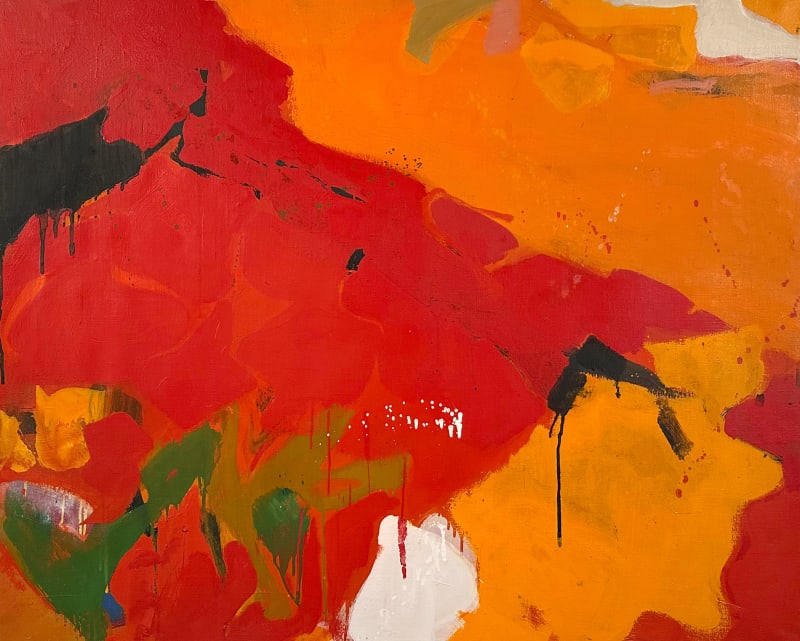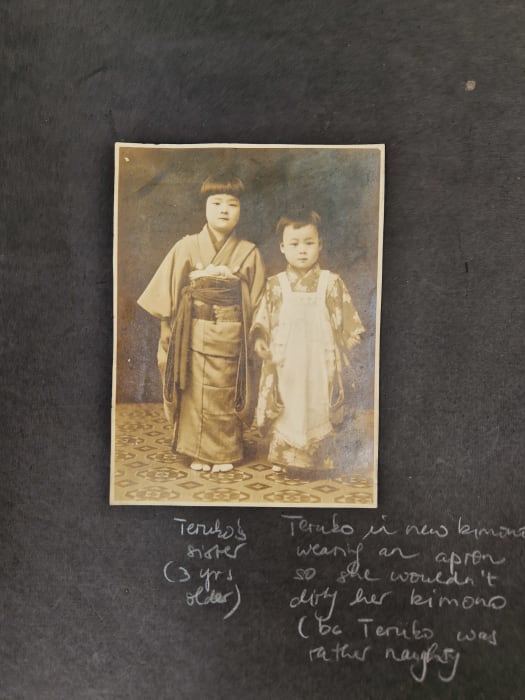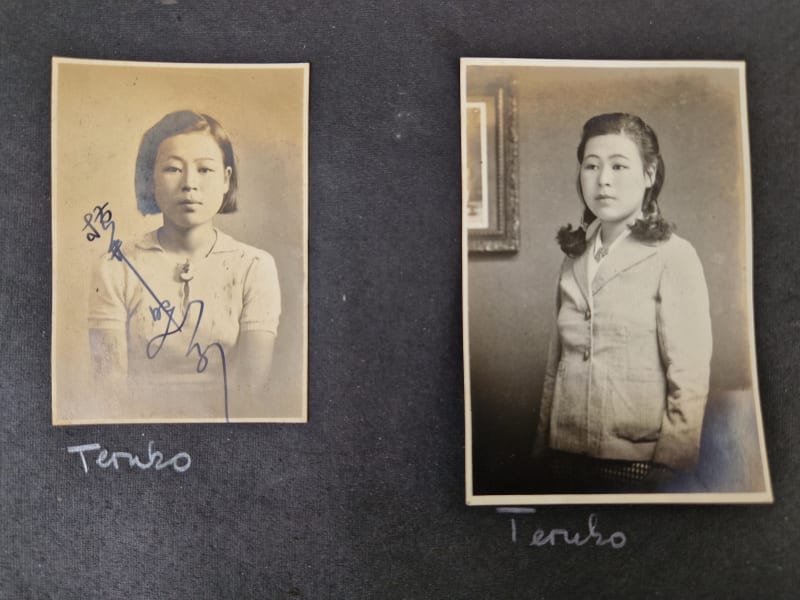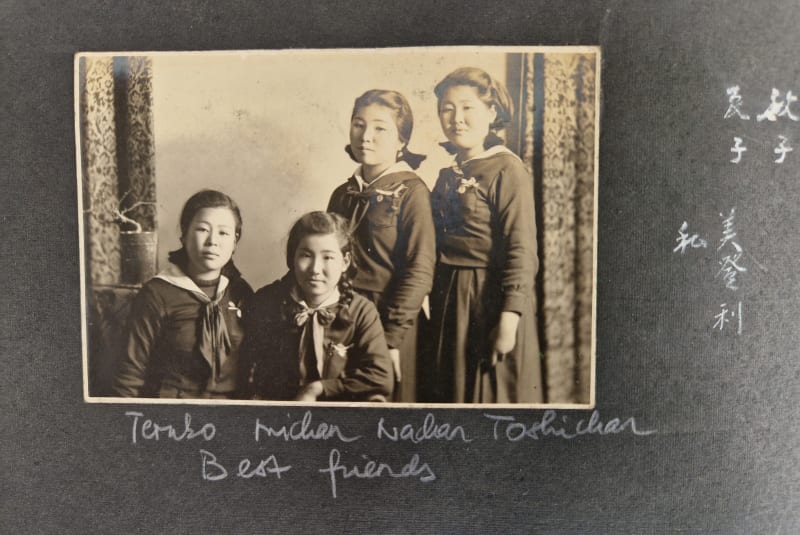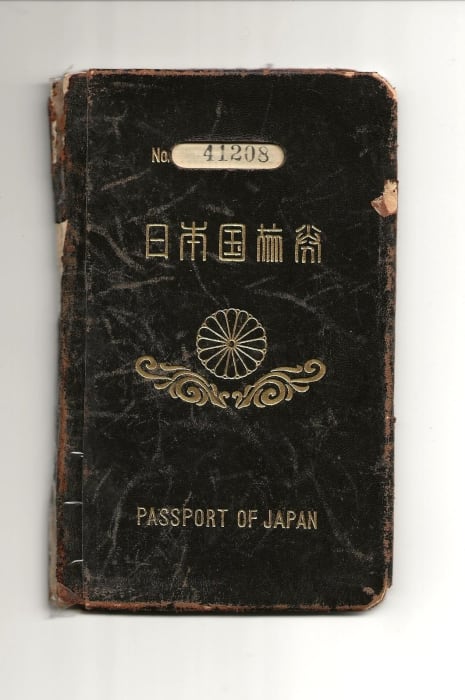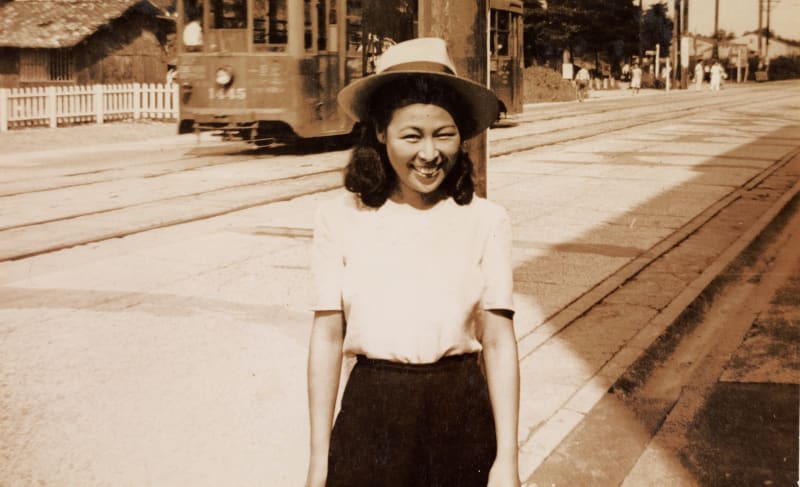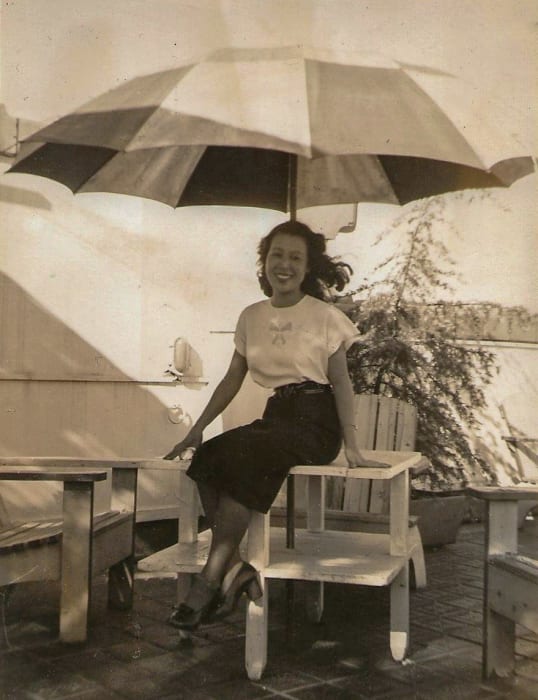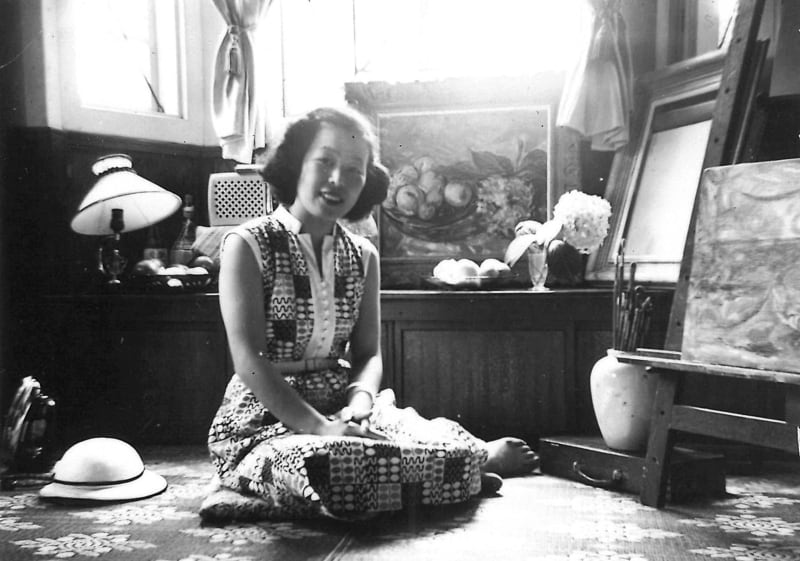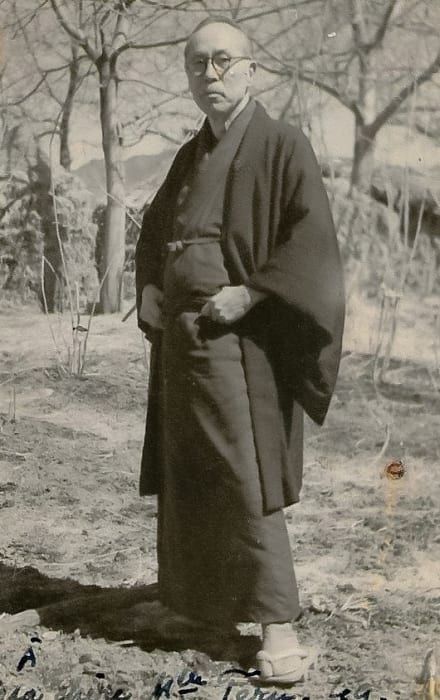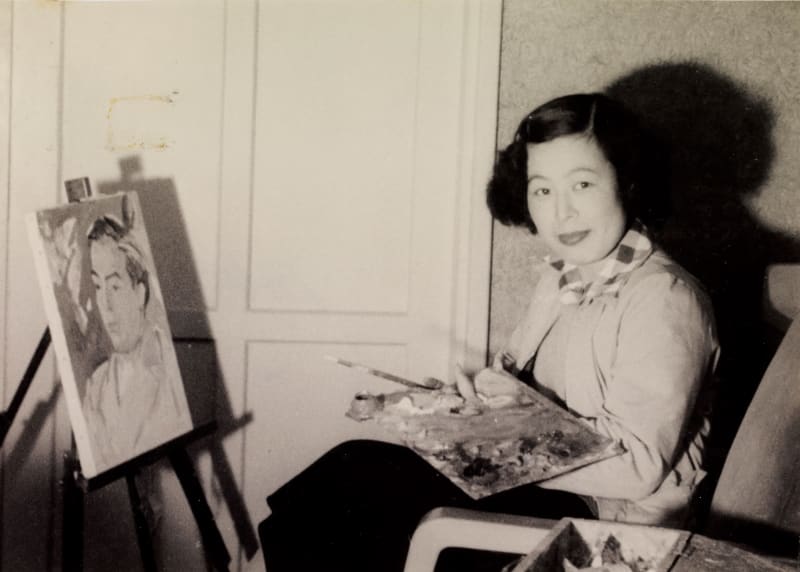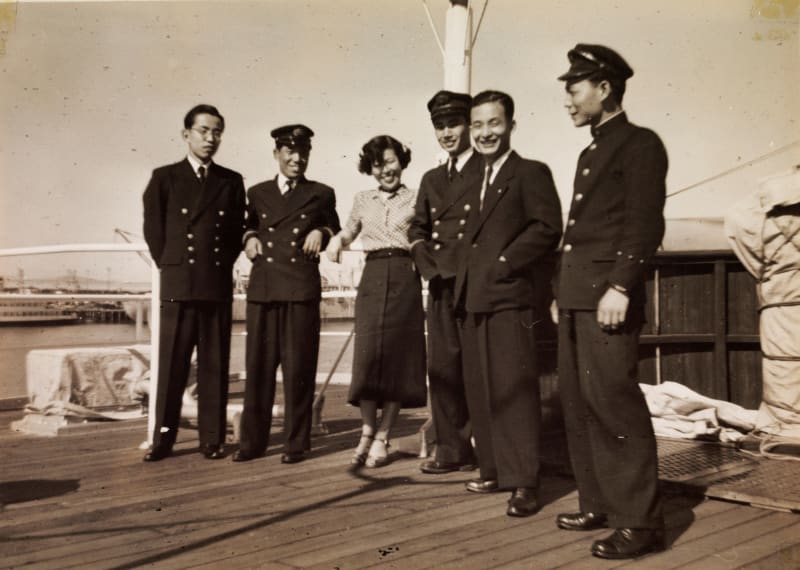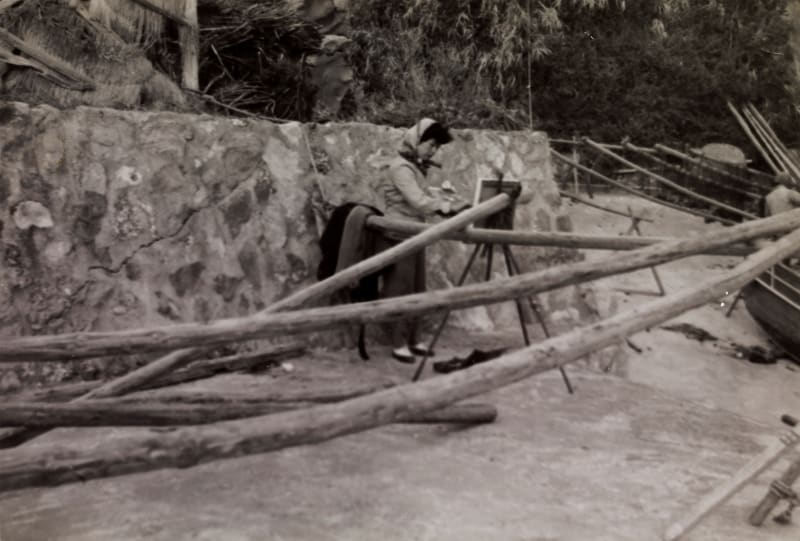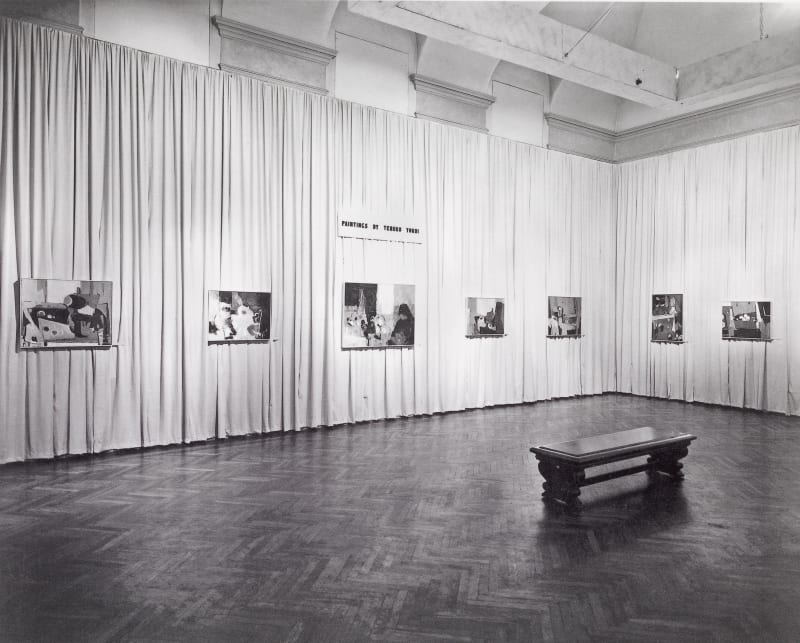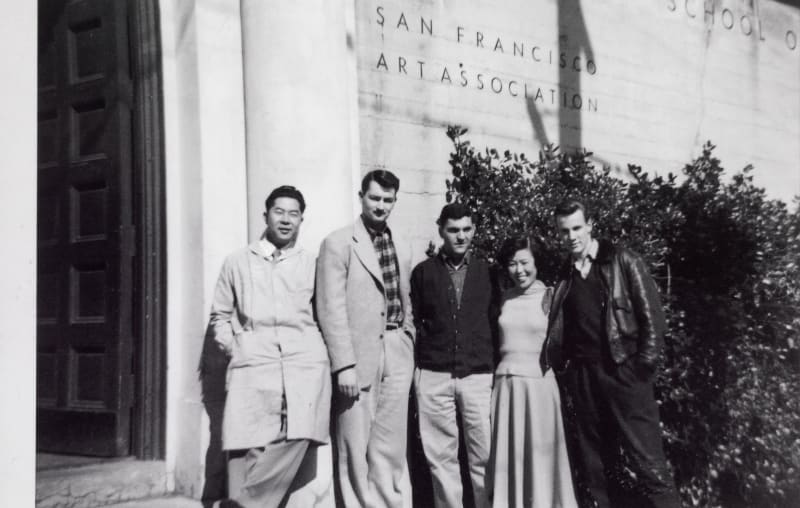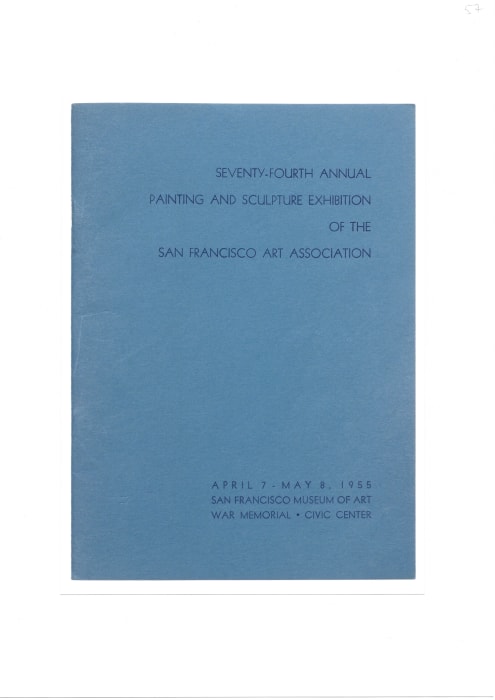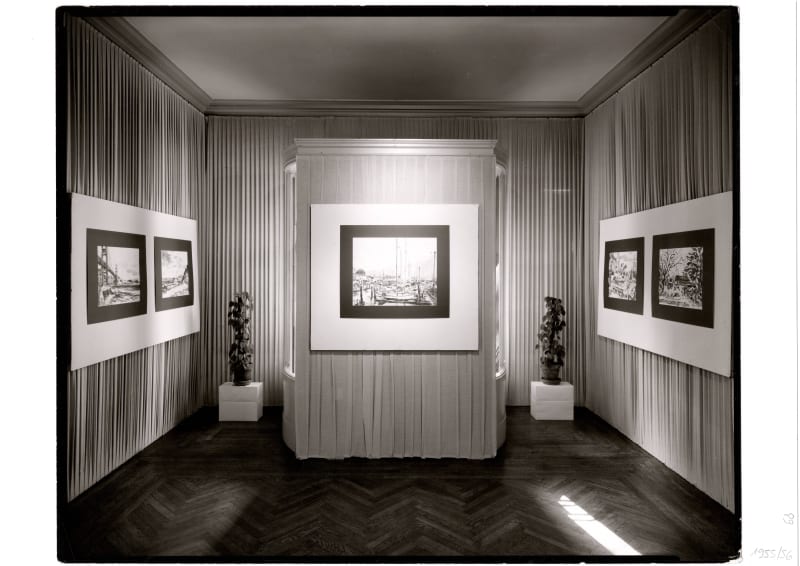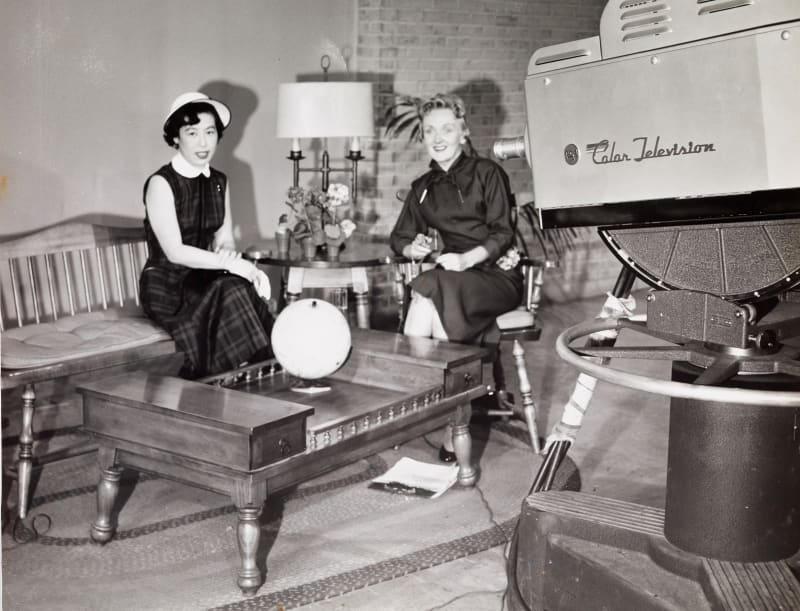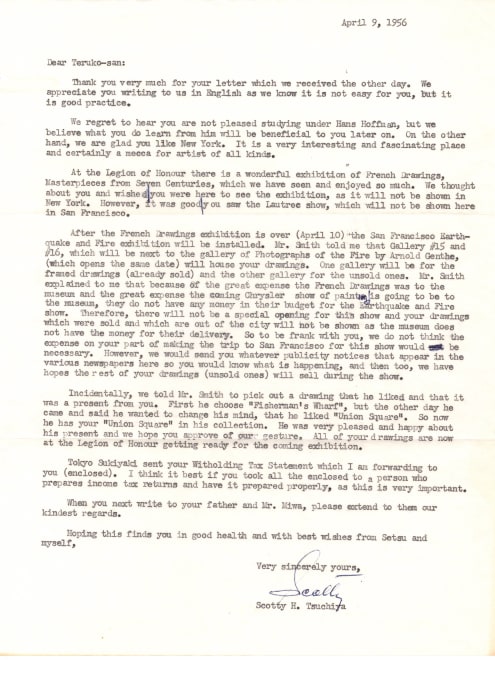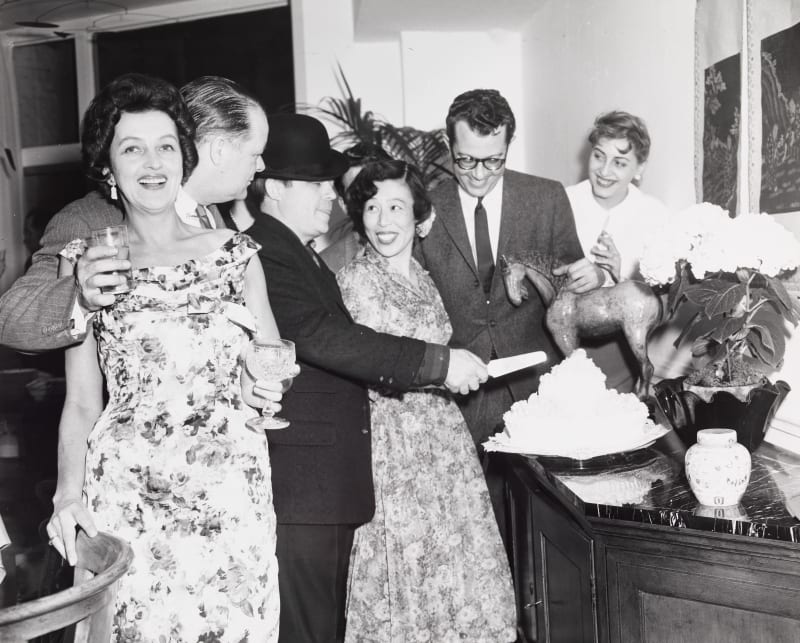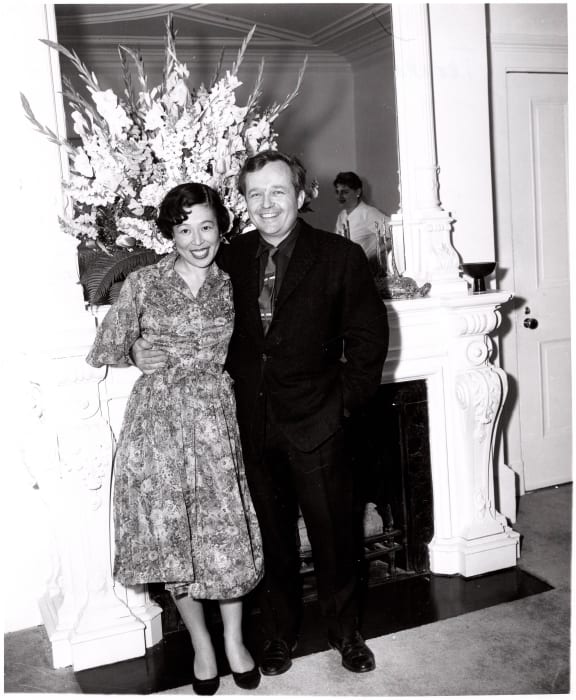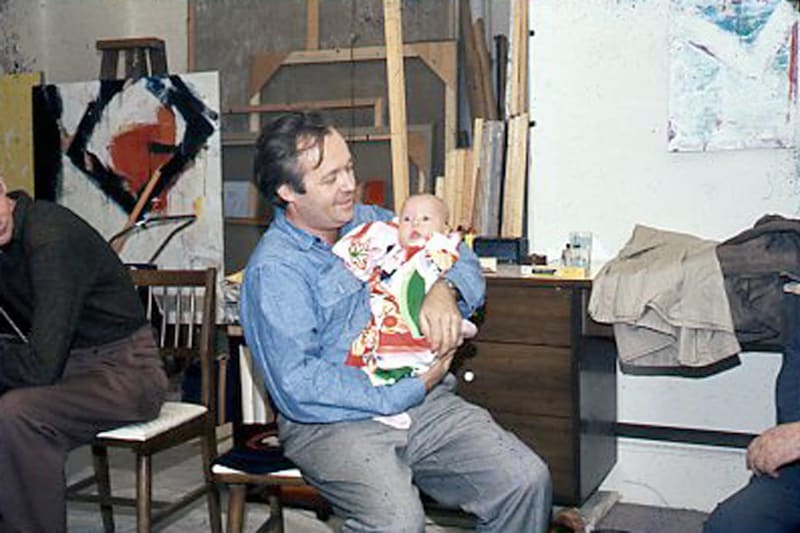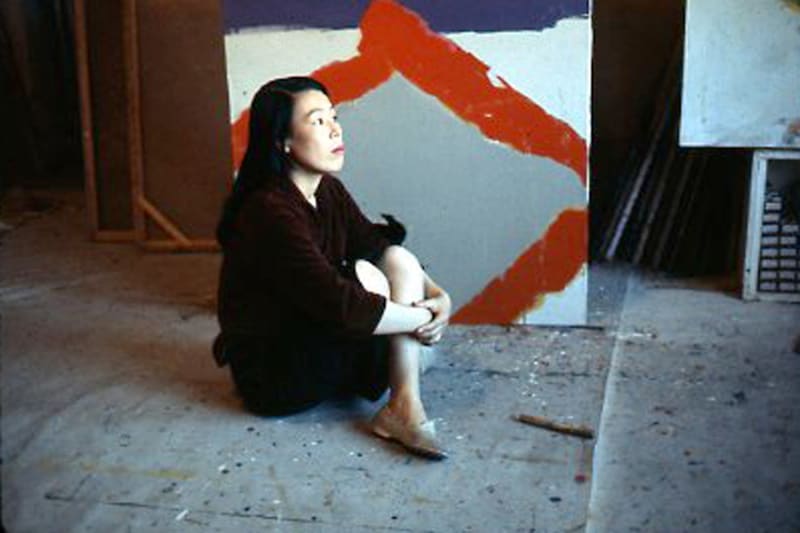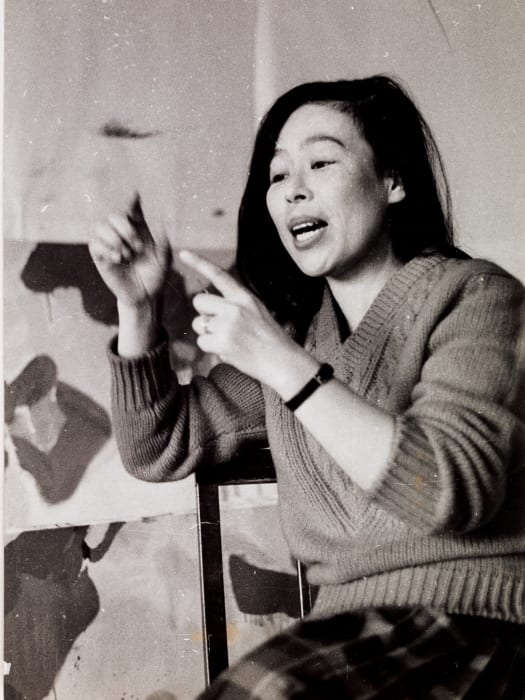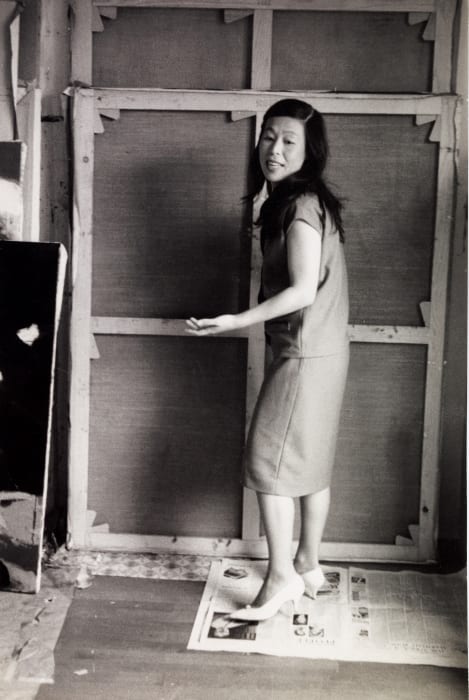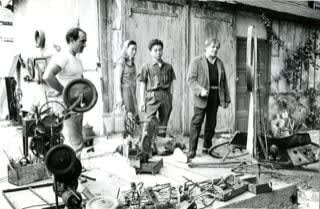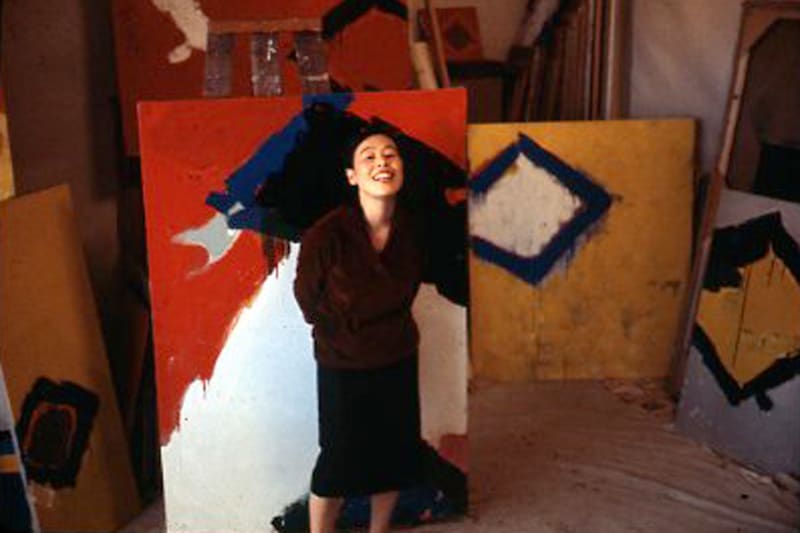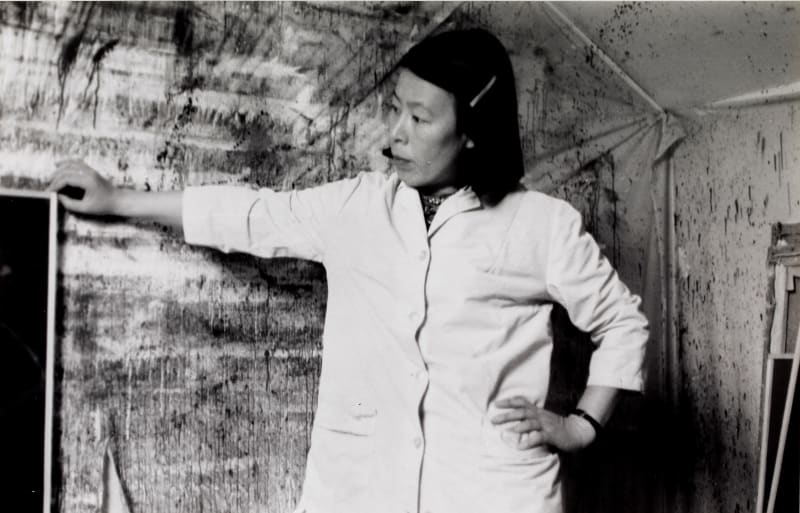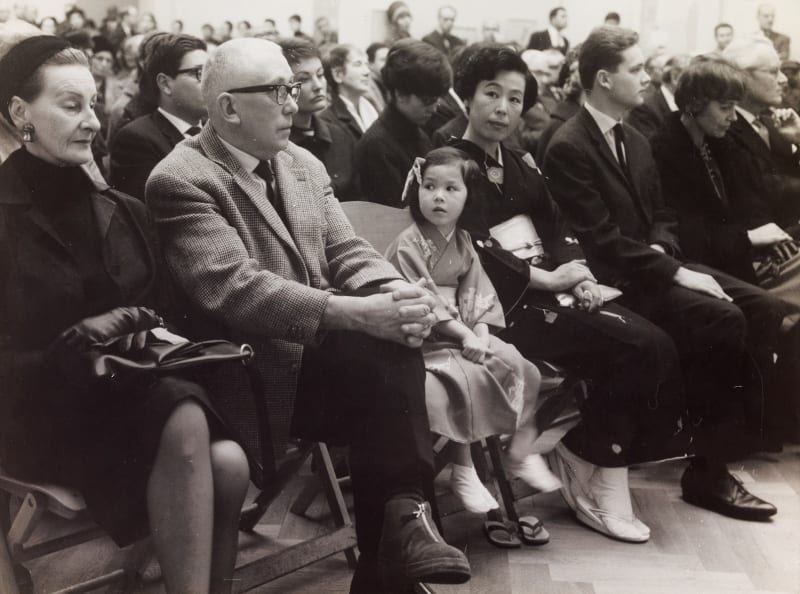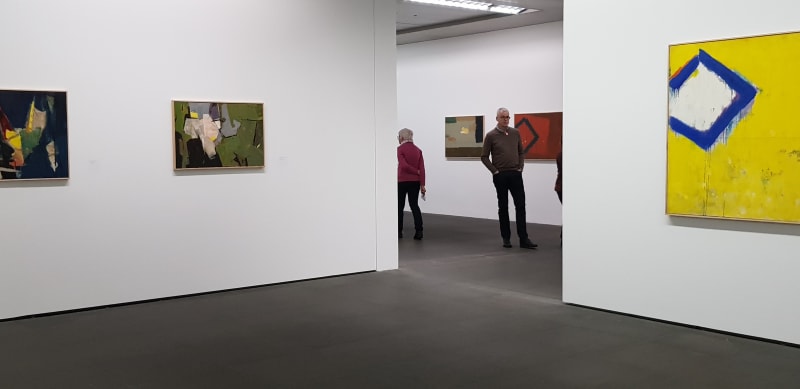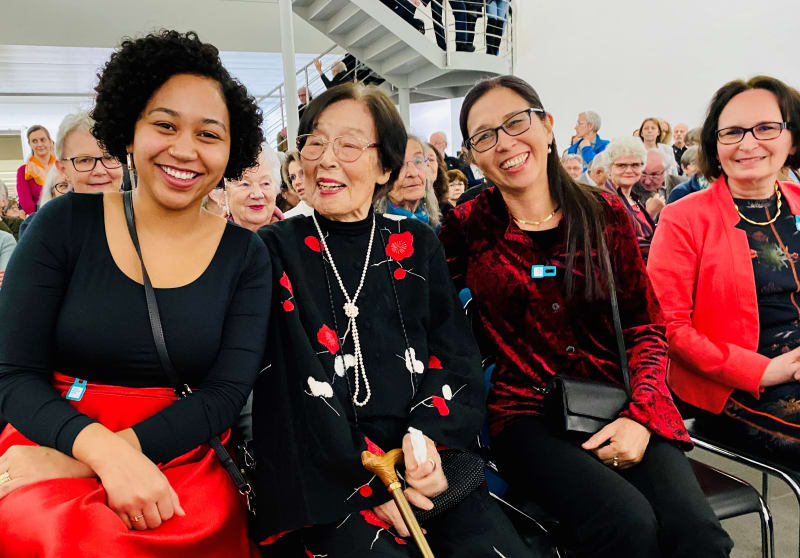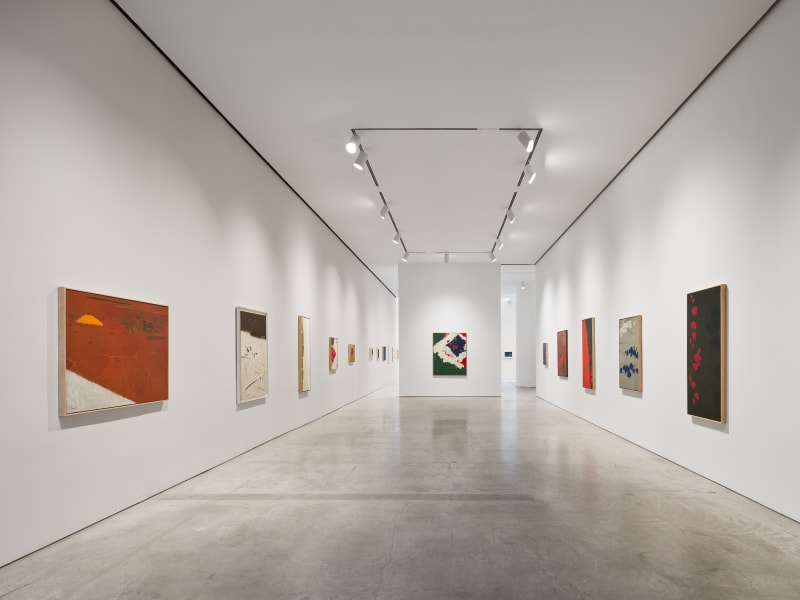There is a remarkable clarity of vision here, pursued fastidiously over nearly seven decades. The temporality the works conjure is not so much the linear progress of a career worked out over time, but that career's engagement, from the first, with issues of cyclicality and renewal, such as the annual change of seasons, as thematized in the virtuoso triptych Mond/Schnee/Blumen (1957). The fact that Yokoi filtered much of her imagery through her memories of a no-longer-extant prewar Japan complicates that temporality further, tempering our confidence in the predictable shi t of the seasons with awareness that even those things that seem most enduring will one day be irretrievably lost. Yokoi's paintings preserve this transmuted reality, along with the knowledge that the only real certainty is the flickering glimmer of change.
Teruko Yokoi (1924–2020) was a Japanese-born Swiss artist. She gained international recognition for her fusion of Eastern and Western artistic traditions. Teruko Yokoi paintings are celebrated for their intricate balance of structure and spontaneity. Her compositions are expressive, with bold brushstrokes, layered textures and strong contrasts.
The Life of Teruko Yoko: Journey from Japan to Europe and the United States
Teruko Yokoi’s career is one of courage and tenacity, forging her own place as a woman painting in the predominately white male milieu of American abstraction.
Born in 1924, near Nagoya, Aichi, Japan, Yokoi was exposed to various artistic influences from a young age. The daughter of a calligraphist and poet, she began taking painting lessons at a very young age. She relocated to Tokyo in her mid-twenties to study with the renowned painter Takanori Kinoshita. Soon she developed a fervor for European contemporary art.
Yokoi arrived for studies in California in 1954. Here, she spent a formative year as one of only two Japanese students in a milieu of artists and writers, and was honored with a show at the Palace of Legion of Honor in San Francisco. She swiftly turned further towards abstraction, creating works of a distinctly modern visual language. In 1955, she moved to New York and studied under the legendary German Abstract Expressionist Hans Hofmann. During this time, she met Kenzo Okada, a Japanese-born Abstract Expressionist painter working in America. Okada introduced his befriended Mark Rothko to Yokoi.
In 1957, Yokoi met Sam Francis. They married in 1959 and welcomed their daughter, Kayo, while residing in the penthouse of the Chelsea Hotel, New York. In 1960, she moved to Paris where she came to know Joan Mitchell and Shirley Jaffee. It was here that her abstraction would come to the attention of the Kunsthalle in Basel, leading to her first major museum exhibition there in 1964. In 1962, the artist permanently relocated to Bern, Switzerland, which remained her home for the rest of her life.
Exploring Teruko Yokoi Paintings: Color, Form & Expression
Teruko Yokoi’s art stands out with its bold color palette and poetic compositions. Delicate yet assertive strokes characterize her approach to modern abstraction. Yokoi synthesizes the aesthetics of traditional Haiku and poetry with Western-style abstraction. As a result, her paintings reflect a fusion dialogue between cultures. They encapsulate themes of movement, identity, and embrace natural harmony.
It was upon her move to New York in 1955 that Yokoi grew increasingly concerned with the use of color, putting varying colors in direct conversation with one another. Beginning in 1958, a shift in her work resulted in a dramatization of composition, surface treatment, and choice of color. Her fields of color allude to the natural environment keeping with the traditional style of Japanese landscape painting.
Yokoi filtered much of her imagery through her memories of pre-war Japan. The resulting work tempers our confidence in the predictable shift of the seasons with the awareness that even what seems most enduring will one day be lost. Yokoi’s paintings preserve this transmuted reality, along with the knowledge that the only real certainty is that of continuous change.
Teruko Yokoi Watercolor: A Delicate Balance of Tradition & Modernity
Yokoi mastered the medium of watercolor paintings which have been particularly revered for their ethereal quality and depth. They exhibit a sophisticated interplay between control and fluidity. Her work often integrates Japanese haiku with gestural elements of Abstract Expressionism. This results in compositions that exude both serenity and movement. They form a fusion of East and West aesthetics, often addressing themes of nature, memory, and displacement. Yokoi’s delicate yet powerful approach has solidified her place in the global art scene.
The Legacy of Teruko Yokoi Art
Yokoi has held over ninety solo exhibitions in Europe and Asia. Her last major retrospective entitled Teruko Yokoi. Tokyo-New York-Paris-Bern was presented by the Kunstmuseum in Bern in 2020. In 2004, the Teruko Yokoi Hinageshi Museum was opened in Ena, Gifu, followed by the Teruko Yokoi Fuji Museum of Art in Shizuoka in 2008.
Kent Fine Art features a selection of works from Teruko Yokoi’s Estate such as Shizen-Natur or Violet.
FAQs About Teruko Yokoi
Who is Teruko Yokoi and what defines her art?
Teruko Yokoi was a Japanese-born artist known for fusing Eastern and Western styles. After studying in Tokyo, she moved to San Francisco, followed by several years in New York and Paris. European modernism and Abstract Expressionism had a great influence on the development of her oeuvre. Powerful colors and compositions mark her signature blend of Japanese and Western aesthetics. Her work often reflects on the poetics of cultural identity, nature, and movement. Her legacy is that of a significant figure in contemporary fine art.
What techniques and themes does Teruko Yokoi explore in her watercolors?
Teruko Yokoi’s watercolor techniques demonstrate masterful skills. The way she treated fluidity, layering, and transparency account for her unique style. Her approach often involves gestural brushstrokes, delicate washes, and bold contrasts. The resulting compositions evoke both tranquility and energy. Her work often represents nature, urban landscapes, and personal reflections on cultural displacement. Utilizing traditional Japanese haiku and the influences of the abstract expressionists, she developed a distinctive style.
Where can I view or purchase Teruko Yokoi paintings?
Two museums in Japan are dedicated to Teruko Yokoi’s work: the Teruko Yokoi Collection at the Hinageshi Art Museum in Ena and the Teruko Yokoi Fuji Museum. Her work is extensively represented in the Schlossberg Thun AG in Bern, Switzerland. At Kent Fine Art, we are pleased to present a collection of many significant works from her Estate. Browse our website for original compositions or stay tuned for upcoming shows currently in preparation for New York.
If you enjoy Teruko Yokoi’s work, you might also like the mesmerizing work of Yulia Pinkusevich. Browse our world of fine art and let yourself be inspired.

